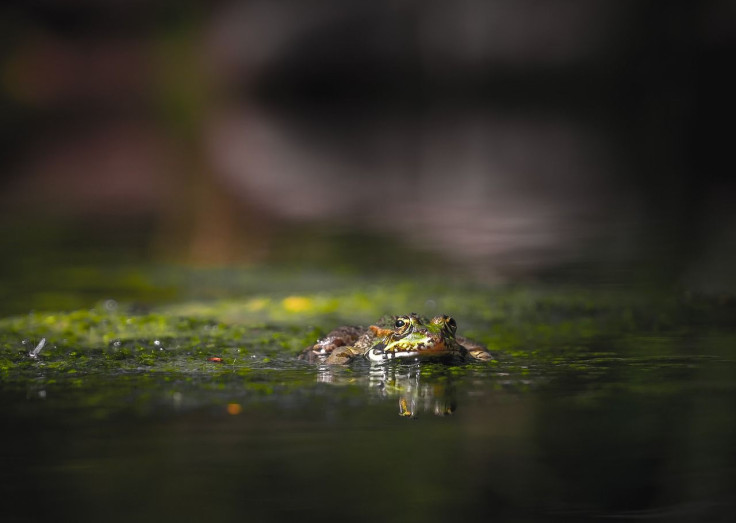New Frog Species With Blue Armpits Discovered: 'Almost Impossible To Find'
KEY POINTS
- The species was discovered, thanks to its unique call
- It was quite hard to find because it "was so well camouflaged"
- Unfortunately, there's a possibility that it's already critically endangered
A new tiny frog species with blue armpits has been discovered in Costa Rica. It gave the discoverers quite a hard time before they could find it.
The new species was discovered by Costa Rican naturalist Donald Valera Soto, according to the news release from Re:wild, an organization that's dedicated to protecting and restoring the wild. Soto is also the co-owner of Tapir Valley Nature Reserve, which used to be a cattle ranch but has been rewilded back to a forest for the last 18 years, and he first heard the unusual call of the mysterious frog in 2018.
"We as country boys, we know sounds," Soto said, as per the news release. "I listened to this little frog and it was almost impossible to find it, it was so well camouflaged."
Soto kept searching for the frog for months, to no avail. It was until he and a small team that included his own young kids finally spotted the tiny frog that was merely 2 centimeters in size.
"I was really happy when I found it because I had been trying to find the frog that was making that unusual call for six months after I first heard it," Soto recalled.
However, the frog did not match any of those in field guides or even on the species identification site iNaturalist, according to a separate Re:wild report. It was initially thought to be the juvenile of another frog species, the Boana rufitela, but it lacked the continuous yellow line along its flanks that has been associated with already known species. This new one also had a yellow line, but it stopped halfway down.
It took a while, but Soto and a team of experts were finally able to spot the adults of the frog as well as their tadpoles.
"It's super hard to find," Esteban Brenes-Mora, the director of Costa Rica Wildlife Foundation and senior Mesoamerica associate for Re:wild, said, as per the report. "Personally, it took me almost two years to find my first specimen."
Based on the physical description and DNA analysis of the frog, they were able to determine that it was, indeed, a new species.
A #newspecies of brilliant green frog of the genus Tlalocohyla (#Anura, Hylidae) hiding between two volcanoes of northern Costa Rica.https://t.co/n42jSpwnVp#Taxonomy pic.twitter.com/oYe5rNEYcs
— Zootaxa updates (@Zootaxa) August 31, 2022
The new species had a "fully transparent" ventral skin and reddish brown spots, the authors wrote in a paper published Wednesday in Zootaxa. The new frog also had distinct bluish armpits that can be seen in this photo shared by Re:wild.
"Morphological, morphometric, larval and acoustic characteristics further distinguish it from other species in the genus and support its uniqueness," the authors wrote. According to Re:wild, it is only the fifth species in its genus.
They named it the tapir valley tree frog (Tlalocohyla celeste) after the "tourism icon" of Costa Rica, the Rio Celeste, and the nature reserve where it was found. Based on the survey, the new species can only be found in a small 20-acre wetland within the reserve. As such, it's quite possible that the species is already critically endangered.
"It's a critically endangered species that needs conservation action right now," Brenes-Mora said, according to the report. "Otherwise, we are going to describe it and then lose it in a couple of years. That's my major concern. We don't want to make noise about the discovery of a new species and then make noise about its disappearance/extinction."
However, the discovery also shows the importance of involving the local community in protecting species as well as describing new ones. Soto, for instance, started the Tapir Valley Nature Reserve to help protect tapirs, but his efforts also led to the discovery of the new species, Brenes-Mora said. Soto is also listed as the lead author of the paper.
"There might be something hiding in their properties, in their lands, in their forests, that is an important addition to science," Soto said, as per the report. "I believe the more we know about what we have, the more we can do to protect it."

© Copyright IBTimes 2024. All rights reserved.






















